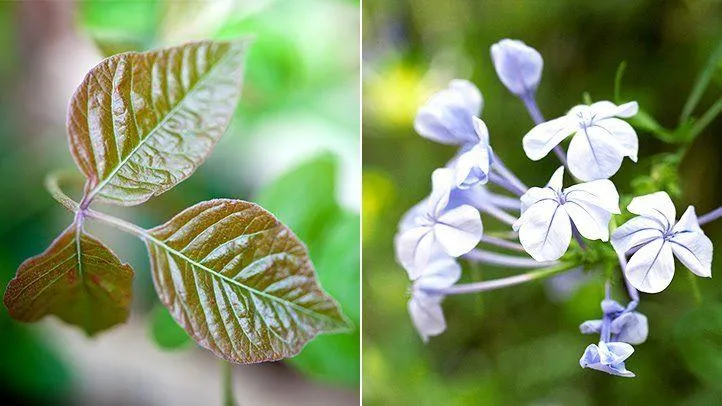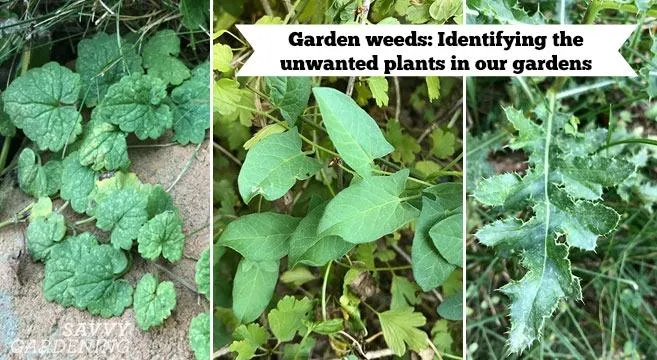What Kind of Ivy Do I Have?
If you’re wondering what type of ivy is growing in your garden or home, you’ve come to the right place. As an avid gardener, I’ve had my fair share of experiences identifying different ivy varieties. In this article, I’ll go over the most common ivy species and give you clues to determine what kind you’ve got. By the end, you’ll be able to put a name to that mystery ivy in no time!
English Ivy
- English ivy (Hedera helix) is one of the most widespread types of ivy found in North America and Europe. It has dark green, glossy leaves that are triangular to heart-shaped.
- The leaves are alternately arranged on the vines and tend to be lighter green on the underside. English ivy can climb trees, walls, and other structures using adventitious roots that form on its woody stem.
- It spreads quickly via runners and underground stems. From my experience, English ivy is a hardy plant that thrives in partial shade and a variety of soil conditions.
Boston Ivy
- Also known as partridgeberry vine, Boston ivy (Parthenocissus tricuspidata) is native to eastern Asia. Unlike English ivy, its bright green leaves turn vibrant red in fall.
- The leaves are palmately compound with three leaflets and finely toothed edges. In the spring, it produces small purple-black berries.
- Boston ivy serves as a wonderful vine for covering walls and fences due to its ability to cling tightly using small pads on its stem. It prefers full sun and evenly moist soil.
Virginia Creeper
- With its five leaflets radiating from a central point, Virginia creeper (Parthenocissus quinquefolia) has a unique leaf structure. Its leaves emerge red in spring before turning dark green in summer.
- come autumn, the foliage transforms into shades of orange, red, and purple. Its small blue-black berries provide food for birds. Virginia creeper spreads rapidly by both climbing and running along the ground.
- It thrives in a variety of conditions from full sun to partial shade. Be cautious when removing it as the stems contain calcium oxalate crystals that can cause irritation upon contact.
From my experience in landscaping, those three types account for the vast majority of ivies commonly found. But there are some less widespread varieties you could potentially encounter as well:
Algerian Ivy
Algerian ivy (Hedera canariensis) resembles English ivy in having dark green, shiny leaves. However, its leaves are larger with more pronounced lobes. It prefers warmer climates and tolerates drier soil.
Swedish Ivy
With leaves shaped like maple leaves with three lobes, Swedish ivy (Plectranthus verticillatus) stands out. It grows as a trailing groundcover rather than a climbing vine. Swedish ivy enjoys shade and constant moisture.

Now that you’re familiar with the main characteristics of the most prevalent ivy species, let’s recap some tips for figuring out what kind you may have:
Examine the leaves – Pay close attention to leaf shape, margins, veins, and colors on both sides. Leaf arrangement on the stem is also revealing.
Observe growth habit – Does it climb, trail along the ground, or spread via runners? How does it attach to surfaces?
Consider location/season – Where was it found – trees, walls, or ground? What does it look like at different times of year?

Research descriptions – Compare your ivy’s traits to written profiles for candidate types. Pictures can help too.
With some observation and process of elimination, you should be able to narrow it down. Here’s a real case I helped someone solve – they had heart-shaped leaves growing up a brick wall that turned red in fall. Bingo, it was Boston ivy! Let me know if you have any other questions. I’d be glad to assist further!
Types of Ivy and Care Information
| Ivy Type | Leaf Shape | Growth Rate | Care Needs |
|---|---|---|---|
| English Ivy | Heart-shaped | Fast | Low water, partial sun |
| Boston Ivy | Palmate, 5 lobes | Moderate | Partial sun, well-drained soil |
| Virginia Creeper | Palmate, 5 lobes | Fast | Full sun, tolerates drought |
| Algerian Ivy | Palmate, 5-7 lobes | Slow | Shade, moist well-drained soil |
| Swedish Ivy | Palmate, 3-5 lobes | Moderate | Partial sun, tolerates drought |
FAQ
-
What are the main types of ivy?
Basically there are a few main types of ivy that folks commonly have growing. English ivy is probably the most typical – it has dark green leaves and climbing stems. Boston ivy is another popular choice, known for its stunning red fall color. Then there’s Swedish ivy with variegated white and green leaves. So in summary, some of the most widespread ivies are English, Boston, and Swedish.
-
How can I tell what kind of ivy I have?
If you’re not sure what variety of ivy you’ve got, here are some ways to figure it out. Take a good look at the leaves – do they have distinctive markings or colors? Variegated leaves likely mean Swedish ivy. The shape of the plant can also provide clues. Clinging tightly to surfaces hints at Boston ivy. Of course, maybe check with a landscaper if you’re still stumped. They’ll know practically every ivy under the sun!

-
Does the type of ivy matter for care?
Kinda sorta – the variety can affect some care habits. For example, English ivy thrives in low to medium light, but expose Swedish ivy to brighter areas. At the same time, all ivies enjoy moist soil. Nevertheless, the fundamentals are similar – give it sun or shade as marked, keep the soil damp. So don’t stress too much about the precise species. Just meet its general needs and it’ll thrive.
-
Why is my ivy losing leaves?
Ivies occasionally drop foliage for natural reasons, like adjusting to changes in weather. However, losing a lot of leaves regularly probably means your plant has issues. One cause could be too much or too little water. Underwatering or soggy soil causes leaf drop. Strong sunlight might also fry delicate variegated ivy leaves. Check soil moisture and exposure if leaves keep disappearing! It could simply need adjusting.
-
How do I get my ivy to grow thicker/bushier?
To fill out an ivy and make it look fuller, give it ideal conditions. Strong, attached vines mean it’s happy. Keep the soil consistently moist but not soaked. Also supplyPartial but not overly hot sun suits most ivies. There’s one more trick – carefully prune leggy growth in spring. This encourages thickening as new shoots replace trimmed parts. Be gentle though – you don’t want to remove too much at once! With perfect care, your ivy will basically explode with growth.
-
My ivy leaves look awful – what’s wrong?
Ivy leaves turning yellow or spotted could indicate multiple problems. Take a close look – are the spots moist or dry? Mealybugs cause fluffy white spots while spider mites leave dry speckles. Overwatered soil often makes yellowed, crinkled leaves. As a start, isolate the plant and wipe leaves with soapy water. You may also need a spray if pests are the issue. Always try to improve care before blaming pests though. After all, healthy plants better resist issues. With TLC, the leaves should bounce back before you know it!

